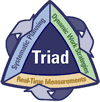
The refinement of the characterization Conceptual Site Model (CSM) using Direct Push Technology (DPT)/Membrane Interface Probe (MIP) assisted in implementing the application of the Dissolved Oxygen In-situ (DO-ITTM) remedy.
Quarterly monitoring at the site has shown positive results of the DO-ITTM application within the residential portion of the site. Results from the other portion of the site are not as positive and an additional application of the remedy is being considered.
| Site Name | Heflin Garage |
| Location | Falmouth, VA |
| Site Type |
Gasoline Service Station/Petroleum Storage Facility |
| Site Regulatory ID |
PC 1989-1102 |
| Project Lead Type |
State Lead |
| Regulatory Lead Program |
State Remedial |
| Reuse Objective Identified |
Yes |
| Proposed Reuse: |
Residential and Commercial/Industrial |
Heflin?s Garage is a towing and truck repair facility with residential surroundings. In 1986, petroleum was appearing in the local residences' drinking water wells and in the early 1990s, Heflin?s underground and aboveground storage tanks were removed from the site. In 2006 and 2007, Environmental Protection Agency?s (EPA) Technology Integration and Information Branch (TIIB) and the Argonne National Laboratory worked with staff from the Virginia Department of Environmental Quality (VDEQ) to apply Triad principles at the site.
The objectives for this project were to:
Meetings were held with stakeholders, including the VDEQ, EPA TIIB, Argonne National Laboratory, and the VDEQ Underground Storage Tank State Lead contractor. Phone conversations were held as needed to disseminate site-work related updates, and a QuickPlace website was used to assist data distribution.
Using sampling transects, the extent of contamination was identified using DPT/MIP, with contamination extent estimation assisting with remedy implementation. DPT/MIP-related data was depicted and distributed in a 3-dimensional model.
A dynamic work strategy (DWS) supported field decision-making and advancement of the CSM. Investigation using DPT/MIP analysis assisted in delineating the area of contamination. Co-located soil and groundwater samples were collected for confirmation and to estimate contaminant mass.
The real-time technology used in this project was a membrane interface probe (MIP) which was used to determine the extent of the source area, and analyzed 17 locations for the presence of petroleum hydrocarbons. MIP data were incorporated into a 3-dimensional graphical model and provided real-time via the QuickPlace website for use by the project team, including regulators.
The DPT/MIP on-site laboratory produced preliminary data in less than one hour and high-quality data in 24-36 hours. Data was entered daily into visualizations to allow real-time decision making for subsequent sampling locations. Data generated during the DPT/MIP investigation identified the extent of contamination and aided in the DO-ITTM Remedial Strategy implementation.
Direct-Push Systems - MIP
TQRS not prepared
| 2007 Monitoring Results (4,657 KB) | |
| Heflin Locations (185 KB) | |
| Virginia Petroleum Release Sites website |
To update this profile, contact Cheryl T. Johnson at Johnson.Cheryl@epa.gov or (703) 603-9045.